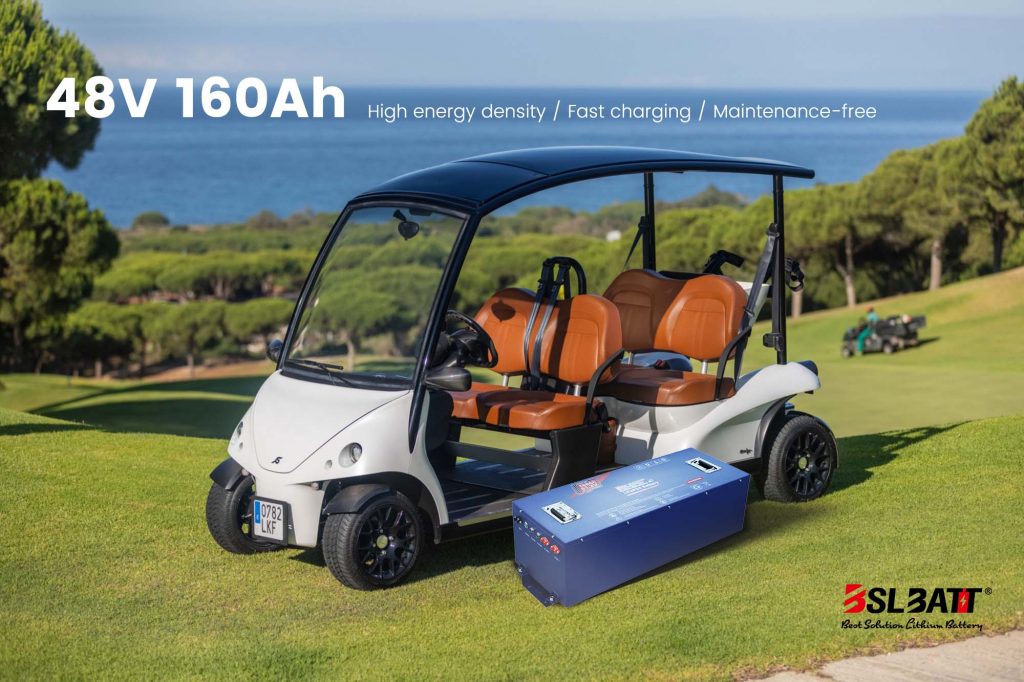
- China
- English
- Françai
- Español
- Deutsch
- Română
- العربية
- 한국어
- 日本語
- Italiano
- Português
- Gaeilge
- Dansk
- Čeština
- Русский
- Afrikaans
- Euskara
- Català
- Esperanto
- हिन्दी
- Ελληνικά
- Bahasa Melayu
- Polski
- Српски
- Kiswahili
- ภาษาไทย
- Tiếng Việt
- Türkçe
- Svenska
- Cymraeg
- Slovenčina
- Latviešu
- Malti
- Magyar
- Galego
- ગુજરાતી
- Eesti Keel
- বাংলা
- Shqip
- беларуская мова
- Nederlands
- Tagalog
- ქართული
- Íslenska
- Kreyòl Ayisyen
- Lietuvių
- Norsk
- slovenščina
- தமிழ்
- Українська
- ײִדיש
- اردو
- తెలుగు
- فارسی
- македонски
- ಕನ್ನಡ
- Bahasa Indonesia
- עברית
- Suomi
- Hrvatski
- Български
- Azerbaijani

Industry Application
Product Type
Types and Choosing of House Solar Batteries
As the demand for clean and sustainable energy sources increases, more homeowners are turning towards solar power. One essential component of a solar power system is the solar battery, which stores the energy generated by the solar panels for later use. In this essay, we will discuss the various types of house solar batteries and offer guidance on selecting the most suitable option for your home.

Types of Residential Solar Batteries
There are three main types of solar batteries available for residential use: lead-acid, lithium-ion, and flow batteries. Each type has advantages and disadvantages, making them suitable for different applications and requirements.
1. Lead-Acid Batteries
Lead-acid batteries are the oldest and most established technology in the battery industry. Lead-acid battery is a chemical energy storage device using lead and lead dioxide (PbO2) as the active substances of negative and positive electrodes, and dilute sulfuric acid as the electrolyte, which actually realizes the mutual conversion between electric energy and chemical energy through electrochemical reaction; it is the preferred chemical power source for all kinds of energy storage systems, emergency power supply and soft/black start devices.
The nominal voltage of a single cell lead-acid battery is 2.0V, which can be discharged to 1.5V and recharged to 2.4V; in practical application, it is often connected in series with 6 single cells to form a lead-acid battery module with nominal voltage of 12V, and then through proper series and parallel on the basis of 12V, the voltage value accepted by the system (such as 48V, 96V) is obtained to realize normal charging and discharging work.
The main components of lead-acid batteries include positive and negative poles, pole plates, separators, electrolytes, containers and so on. Because there is a large amount of chemical solution in the battery module, it is generally heavy.

lead-acid batteries are two subcategories: flooded lead-acid (FLA) and sealed lead-acid (SLA), which include both Absorbent Glass Mat (AGM) and Gel batteries.
In actual use, the proportion of colloidal and lead-carbon batteries is increasing. The over-discharge, self-recovery ability and low-temperature charging and discharging performance of colloidal batteries are a little better; lead-carbon batteries, due to the addition of carbon (graphene) in the electrolyte, prevent the phenomenon of negative electrode sulfation and improve the problem of easy battery failure, thus greatly increasing the service life of batteries.
The charging mode of lead-acid batteries generally has three modes: constant current, constant voltage and floating charge, also known as three-stage charging. Charging current is a very important parameter, the unit is generally expressed in C. The battery specification parameters will be clearly marked with a battery’s maximum charging current, generally 0.1C, 0.2C or 0.3C;
For example, if the capacity of a battery is 200Ah, the charging current of 0.1C is 0.1×200=20A, 0.2C is 0.2×200=40A; the best charging current of lead-acid maintenance-free battery should be about 0.1C, too much or too little charging current will affect the service life of the battery.
Pros:
Low upfront cost
Wide availability
Recyclable and environmentally friendly
Cons:
Shorter lifespan (3-5 years)
Lower energy density
Regular maintenance is required for FLA batteries
Not suitable for deep discharging (50% or more)
2. Lithium-Ion Batteries
Lithium batteries have become increasingly popular in recent years due to their numerous advantages over lead-acid batteries. They are commonly used in electric vehicles, smartphones, and laptops.
Lithium battery is a class of batteries made of lithium metal or lithium alloy as positive/negative materials and using non-aqueous electrolyte solution; mainly divided into lithium metal batteries and lithium ion batteries. Generally speaking, lithium batteries refer to lithium-ion batteries, which are secondary batteries, that is, they can support charging and discharging.
Lithium-ion batteries use lithium alloy metal oxide as the positive material, graphite as the negative material, the main body of the lithium-ion battery storage lithium is the negative material, which plays a key role in the performance of the battery charge and discharge efficiency, the number of cycles, etc.
Lithium-ion batteries are mainly divided into lithium cobalt-acid, lithium manganate, lithium nickel-acid, lithium iron phosphate, lithium ternary batteries and so on according to the different cathode materials.
Comprehensive weighing price cost, performance, safety and other factors, in the actual energy storage system applications, the use of more lithium iron phosphate batteries. Lithium iron phosphate batteries are generally considered to be free of any heavy metals and rare metals, is non-toxic, non-polluting green batteries.
It uses lithium iron phosphate (LiFePO4) as the positive electrode material and carbon as the negative electrode material, with a single cell rated at 3.2V and a charging cut-off voltage of about 3.6V to 3.65V; the required voltage and capacity are achieved by series and parallel.
Pros:
High energy density
Longer lifespan (10-15 years)
Low maintenance requirements
Greater efficiency
Faster charging times
Suitable for deep discharging (80-90%)
Cons:
Higher upfront cost
Sensitive to high temperatures
Limited recycling infrastructure

Main performance indicators of lithium iron phosphate monobloc batteries:
Nominal capacity — in Ah or mAh
Nominal voltage — approximately 3.2V
Charge termination voltage — about 3.55V~3.6V
Discharge termination voltage — about 2V~2.5V
Internal resistance — approx. <20mΩ
Cycle time of battery — generally >3000 times
Self-discharge rate — about 5%~8%
Lithium batteries should also include BMS (Battery Management System), i.e. battery management system, which generally contains a central control unit, an acquisition unit, display unit, data logging unit and external expansion unit.
The main functions of the BMS are:
- Single battery parameter monitoring
- SOC (state of charge) calculation
- Temperature monitoring and management
- Battery energy balance control
- Fault diagnosis and alarm
- Information display
- Data logging
- Communication with upper computer
Choosing the Right Solar Battery for Your Home
When selecting a whole house solar battery, consider the following factors:

1. Lead-acid battery or lithium battery
First, the battery accounts for a high proportion of the energy storage system. For energy storage inverters that support both lead-acid batteries and lithium batteries, the choice depends on the willingness to invest, the type of project, the location of the project, the warranty requirements, etc.
The energy density of lithium battery (ρ=E/V) is higher, about 6 to 7 times that of lead-acid battery, smaller, lighter, and with long cycle life, 1.5 to 5 times that of lead-acid battery. Therefore, the general energy storage machine manufacturers to provide warranty batteries, are lithium batteries. However, lithium batteries have relatively worse performance in low-temperature conditions, while the price is also higher, usually more than 2 to 4 times that of lead-acid batteries.
2. Capacity selection
Capacity refers to the total amount of energy a battery can store, measured in kilowatt-hours (kWh). The power of a battery is the amount of electricity it can deliver at once, measured in kilowatts (kW).
The battery capacity selection is the most important or based on the user’s storage needs to determine, while taking into account the system capacity. For example, a user needs to store 30kWh/day, he installed a set of 3KW off-grid energy storage system, and no utility complementary, then, his set of batteries will need at least 2 days to reach the full charge state; encounter a continuous rainy season may not be full for a long time.
This situation in the system design stage needs to take into account the constraints of a variety of factors, increase the installation capacity of photovoltaic modules, and increase the output capacity of energy storage control equipment. Lead-acid battery specifications said “xxx V / xxx Ah”, for example, common 12V / 100Ah, its single block capacity is 12 × 100 = 1200VAh = 1200Wh = 1.2KWh, that is, 1.2 degrees of electricity if the demand for 30KWh of storage capacity, about 30 ÷ 1.2=25 pieces.
Lithium batteries can generally be directly selected according to their PACK capacity, such as a single PACK of 2.56KWh battery pack, 2 packs are 5.12KWh, and 10 is 25.6KWh.

3. High voltage battery or low voltage battery
There are high-voltage (HV) series and low-voltage (LV) series of energy storage inverters, and accordingly, there are high-voltage and low-voltage house solar batteries. The general single-phase output battery inverter with low-voltage battery, the terminal voltage is about 48V ~ 52V.
At this time, if the choice of lead-acid batteries, through four 12V series to 48V; if lithium batteries can directly choose the voltage level of 48V battery pack; three-phase and off-grid integrated (Hybrid) energy storage machine with high-voltage home solar battery, the voltage is about 100V ~ 550V; more powerful integrated machine, the battery voltage is higher, such as BSLBATT MatchBox series and off-grid integrated machine, its rated battery voltage is 716V, the voltage range can be 627-817V, series and parallel method is similar to the low-voltage battery.
4. Depth of Discharge (DoD)
The DoD is the percentage of a battery’s capacity that can be used before it needs to be recharged. A higher DoD means you can use more of the battery’s stored energy before needing to recharge it. Look for a battery with a DoD of at least 80% to get the most out of your stored energy.
5. Compatibility
Ensure that the solar battery you choose is compatible with your existing solar power system, including the inverter and charge controller. Some batteries may require specific equipment or a particular setup, so it’s essential to verify compatibility before making a decision.
6. Battery Life and Warranty
Solar batteries have a limited lifespan, typically measured in cycles (one cycle is a full charge and discharge). The number of cycles a battery can perform before its capacity drops significantly will determine its lifespan. Look for a battery with a long cycle life and a warranty guaranteeing a certain number of cycles or years of use.
In conclusion, there is no one-size-fits-all solution when it comes to choosing a house solar battery. By assessing your energy requirements, budget, space constraints, climate, and environmental impact, you can make an informed decision that best suits your needs. As solar battery technology continues to advance, homeowners will have even more options to choose from, making the transition to clean and sustainable energy more accessible for everyone.
A Guide to Choosing the Best 48V Lithium Golf Cart Battery
Would it be worth investing in a 48V ...
10 Exciting Ways To Use Your 12V Lithium Batteries
Back in 2016 when BSLBATT first began designing what would become the first drop-in replacemen...
BSLBATT Battery Company Receives Bulk Orders from North American Customers
BSLBATT®, a China Forklift battery manufacturer specializing in the material handling indust...
Fun Find Friday: BSLBATT Battery is coming to another great LogiMAT 2022
MEET US! VETTER’S EXHIBITION YEAR 2022! LogiMAT in Stuttgart: SMART – SUSTAINABLE – SAF...
Looking for new Distributors and Dealers for BSL Lithium Batteries
BSLBATT battery is a fast-paced, high-growth (200% YoY ) hi-tech company that is leading the a...
BSLBATT to Participate at MODEX 2022 on March 28-31 in Atlanta, GA
BSLBATT is one of the largest developers, manufacturers, and integrators of lithium-ion batter...
What makes the BSLBATT the Superior Lithium Battery for your Motive Power needs?
Electric forklift and Floor Cleaning Machines owners who seek the ultimate performance will fi...



























